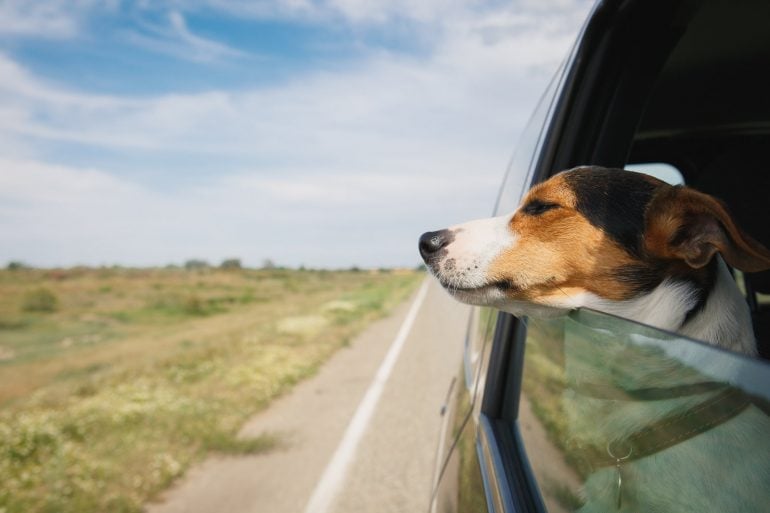When traveling with the family dog, few pet owners are sure what’s best for man’s best friend in terms of safety and comfort.
The study, conducted jointly by The Hartford, sponsor of the AKC Canine Good Citizen (CGC) and S.T.A.R. Puppy programs and the American Kennel Club (AKC), found that two in three pet owners don’t know the safest place for Rover when traveling in the car — and three in five people say they’re unsure about how often to stop driving to give the dog a break from a long road trip.
“We love to hit the road with our canine companions because it’s fun to live vicariously through our dog’s sense of discovery, especially on long road trips,” said AKC spokesperson Lisa Peterson. “But the next time you tell your dog ‘Want to go for a ride?’ remember to plan for the dog’s safety and comfort, too.”
A majority of dog owners surveyed (66 percent) take to the road with Rover — whether it’s on a family vacation, dropping the kids off at school or heading home for the holidays. Not surprisingly, the survey revealed that 85 percent of respondents exhibit responsible dog ownership by knowing their dog needs to be secured in the vehicle while driving, and 67 percent say they know how to incorporate the seatbelt to do it.
Here are some simple steps you can take to help keep your dog happy and healthy when riding in the car.
Traveling with Rover: Tips to keep your dog safe in the car
On the road:
- Secure your dog: A crate is the safest place for your dog to be while traveling in the car. During an accident, a loose dog can become a projectile — and not only hurt himself, but injure human occupants, too. Secure the crate in the middle or rear of the vehicle. A carrier or harness that attaches to the seat belt in the back passenger seat is a safe option. Pet supply stores sell harnesses, and carry a range of sizes that will fit most dogs. No animal should ever ride loose in the bed of a pickup truck, which can lead to serious injuries or death in the event of an accident.
- Take a break: On long road trips, dogs need a potty break more often than when left home alone. Ideally, stopping every three hours for a 30-minute break gives Fido time to do his business, stretch his legs, get some water, and take in some fresh air and scenery.
- Close the window: To prevent ear and eye injuries, do not allow your pet to stick his head out the car window while the car is moving.
- On hot days, never leave your pet unattended: Hot cars can kill dogs, so never leave your pet unattended in the car on hot days. Temperatures can rise quickly, causing heat stroke or death — even with windows open.
After an accident:
- Rely on emergency cards and crate labels: In case you are injured and can’t attend to your dog, make sure you have an emergency card as well as a label on the dog’s crate with the following information: Your name, address and cell phone number, your dog’s name and breed, as well information on who to call to come care for your dog.
- Check to see if you have coverage for dog assistance: You should also check with your insurance carrier to see if you have coverage for dog assistance in the event you are injured and can not attend to your dog. For example, The Hartford provides coverage for dog sitting and dog walkers while you recover.
- Consider a Pet ID: Most importantly, make sure your dog has a collar tag and a microchip should he get lost or sent to a shelter after a car accident. His tag should have your cell phone number and pet recovery service number. To check that your contact information is current, or to enroll your pet in a 24-hour recovery service, visit akcreunite.org.








